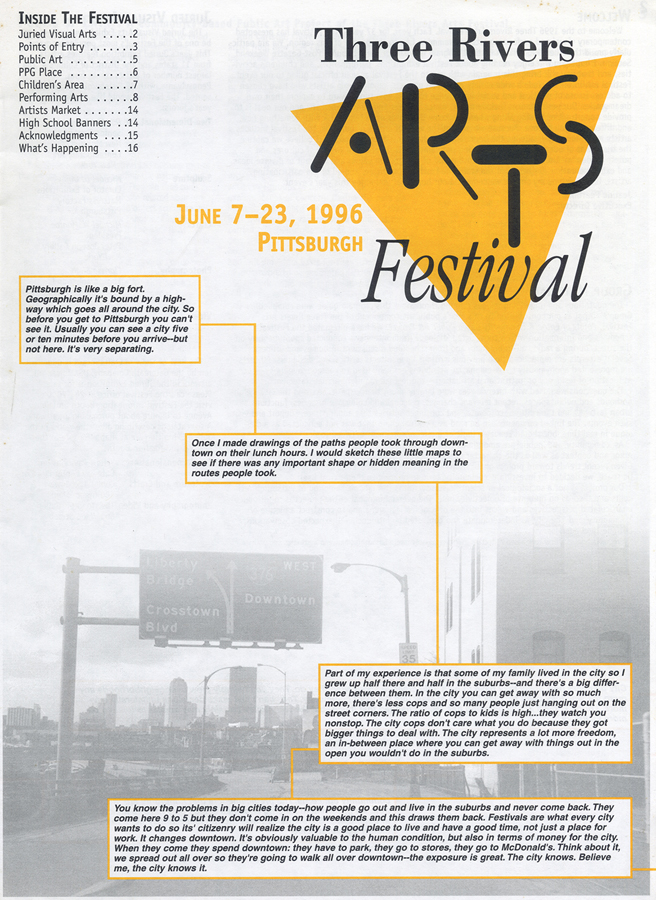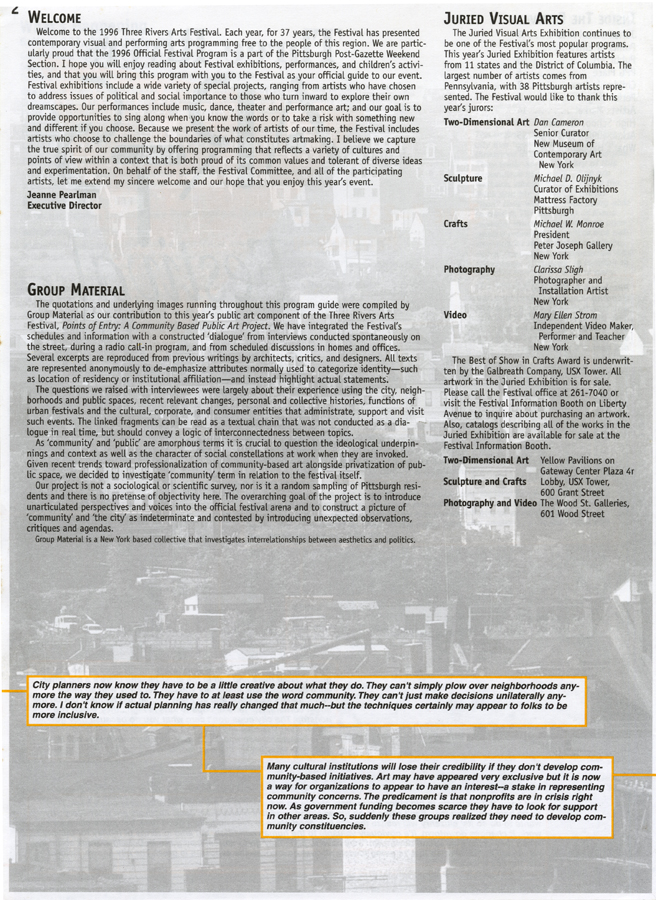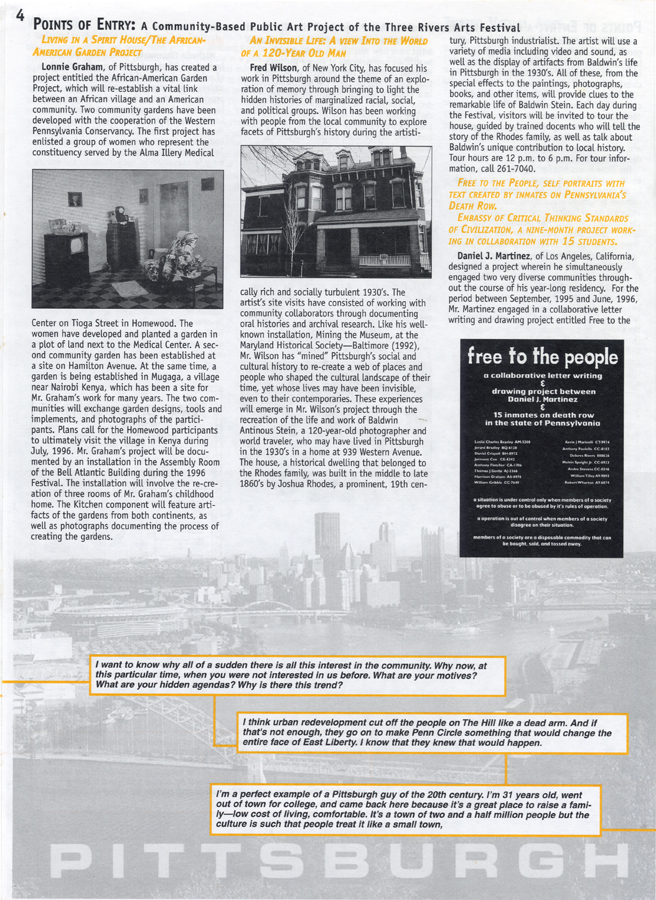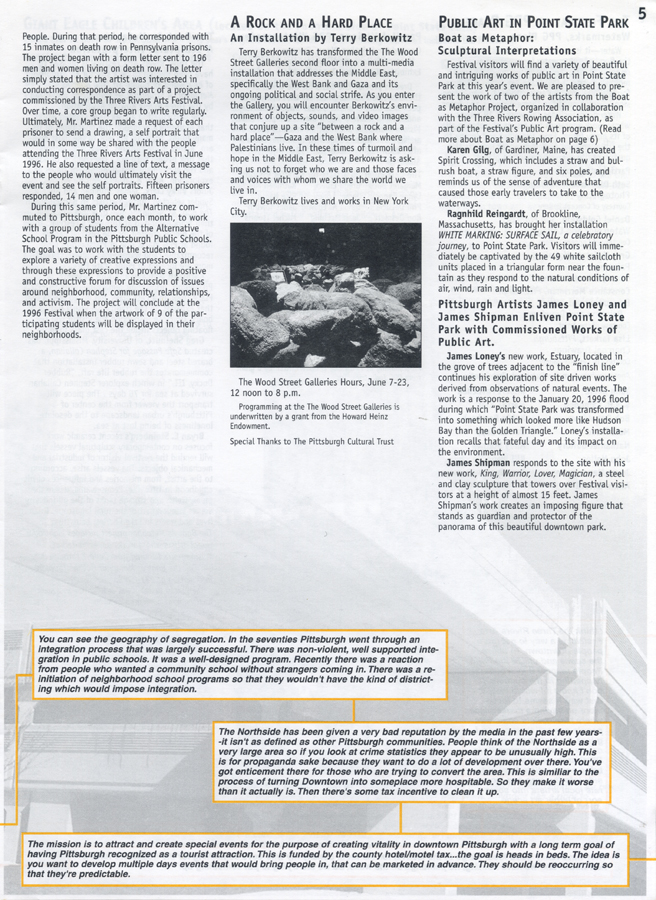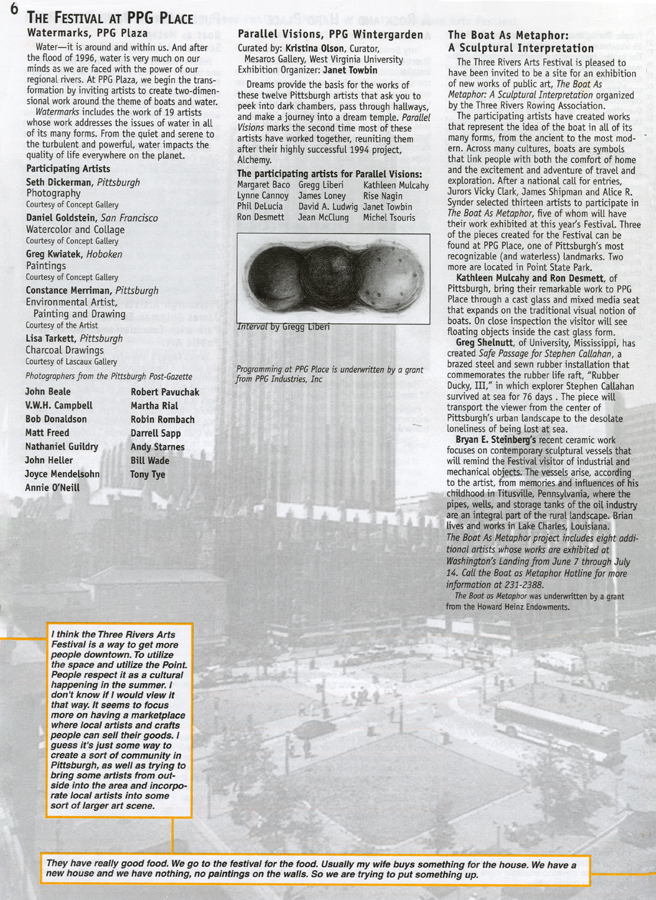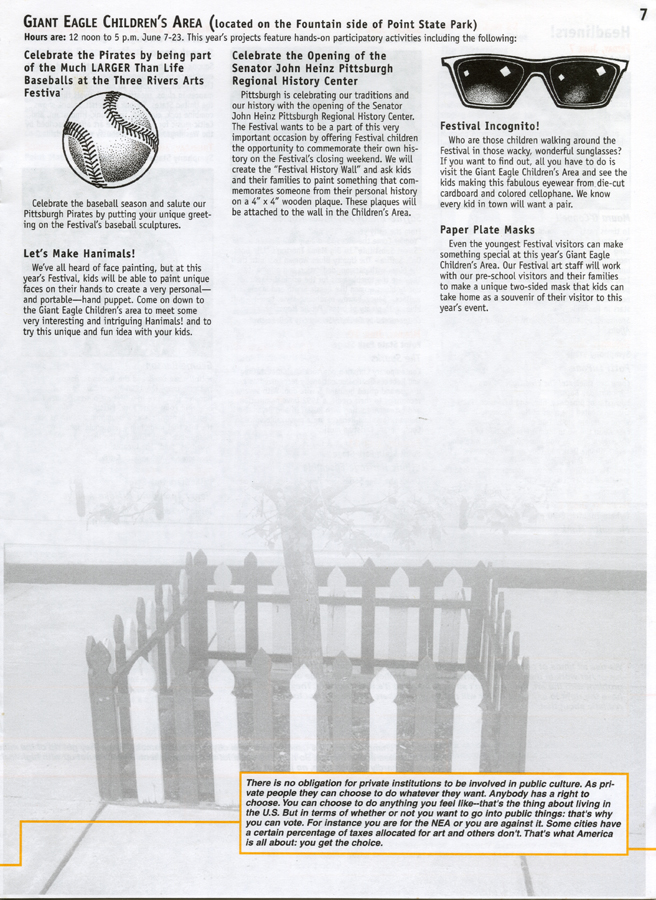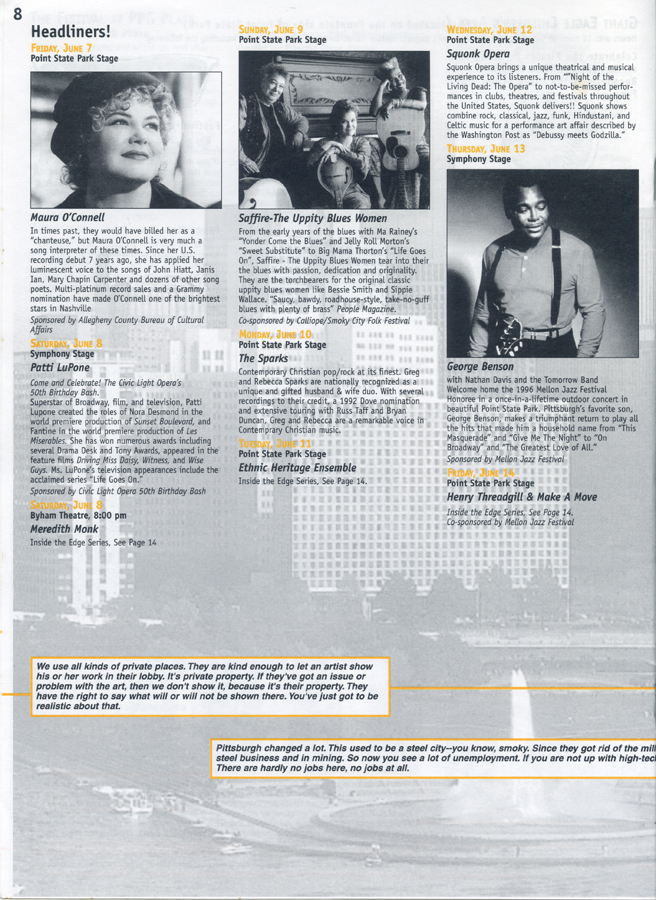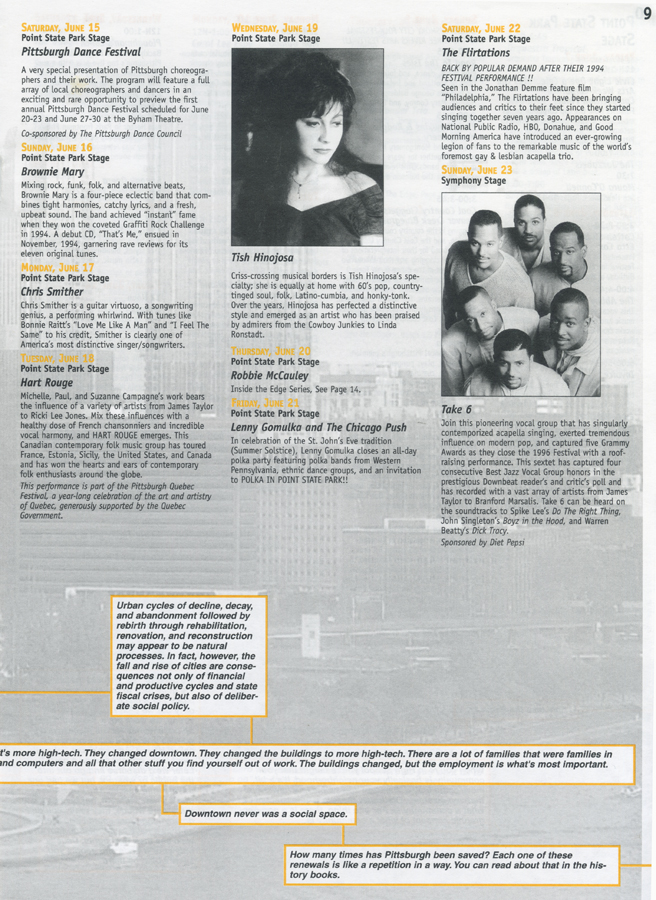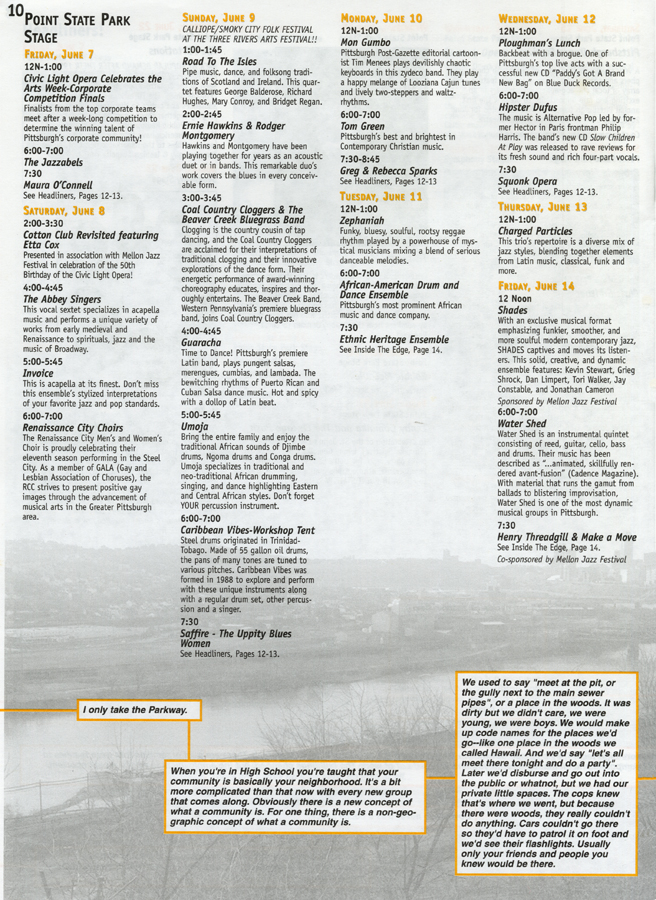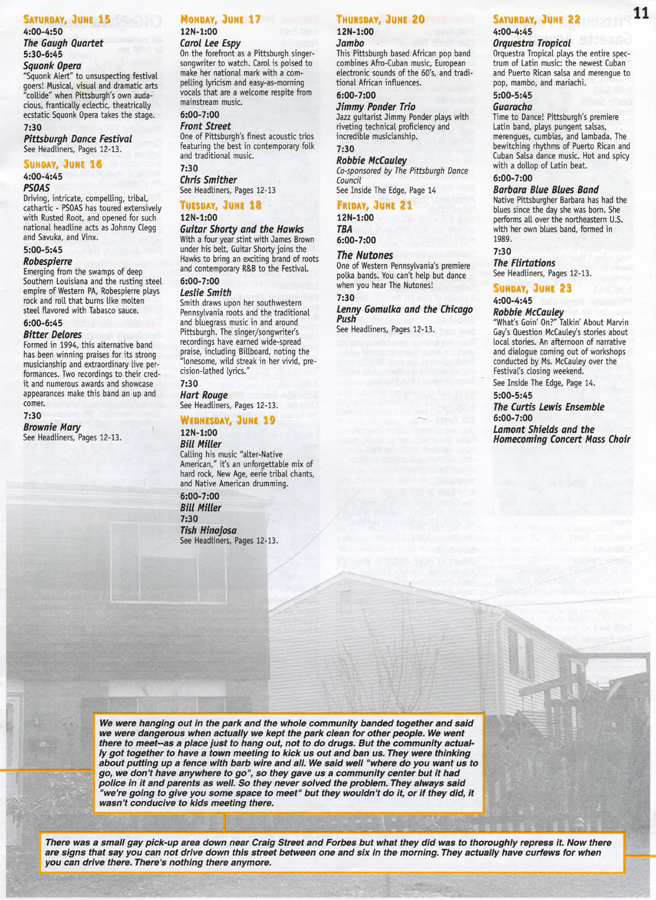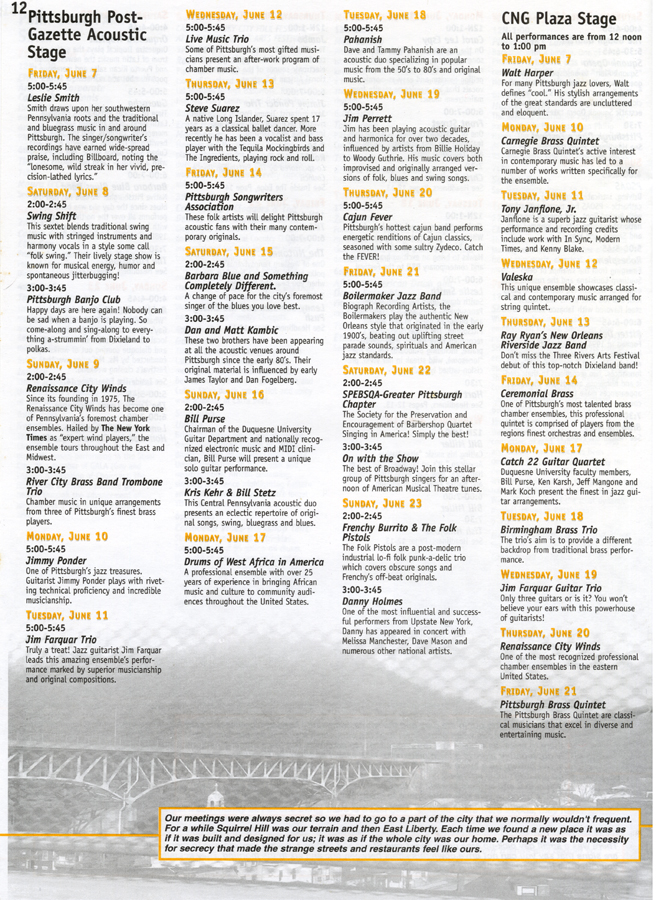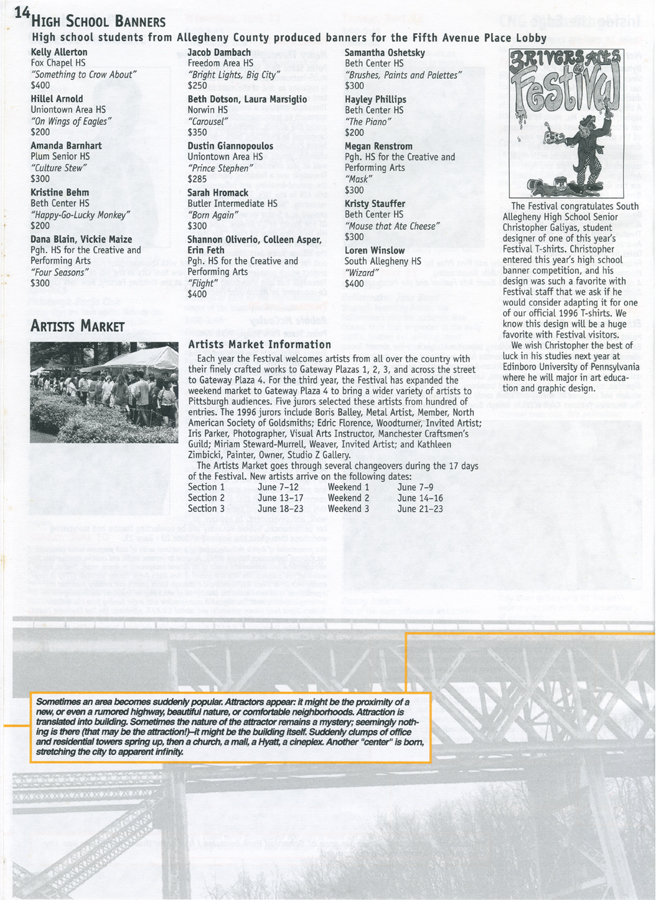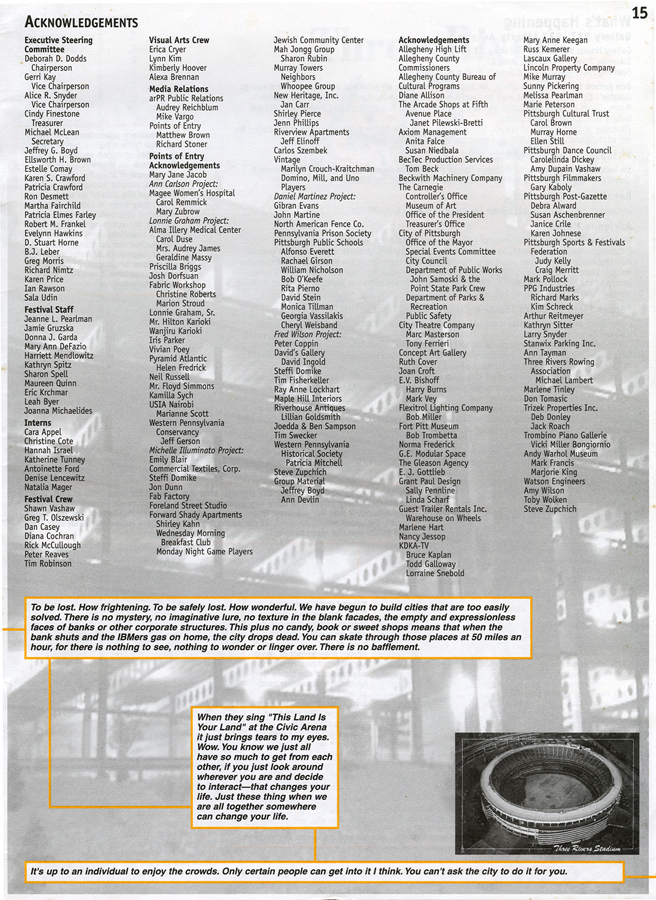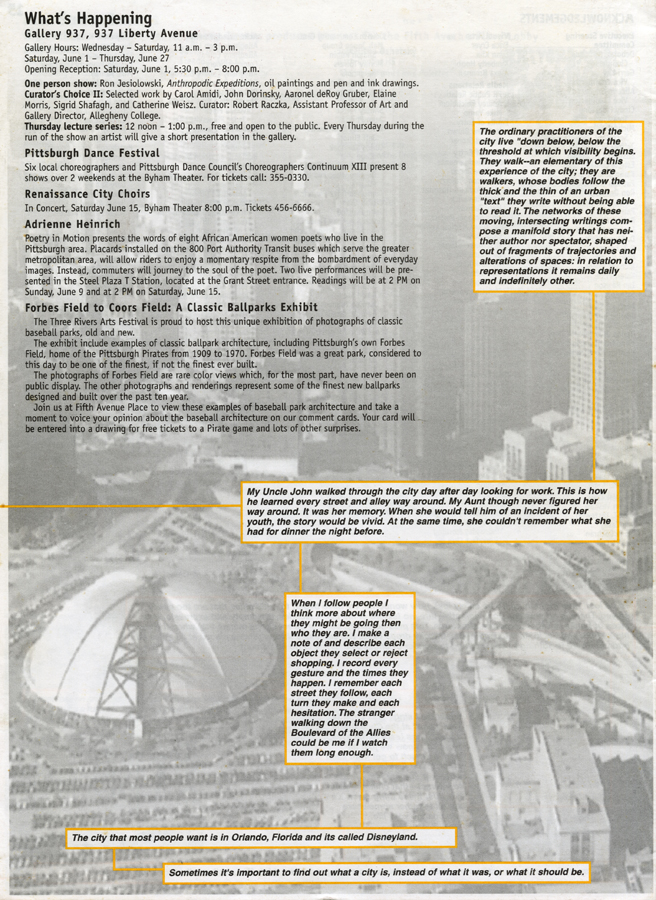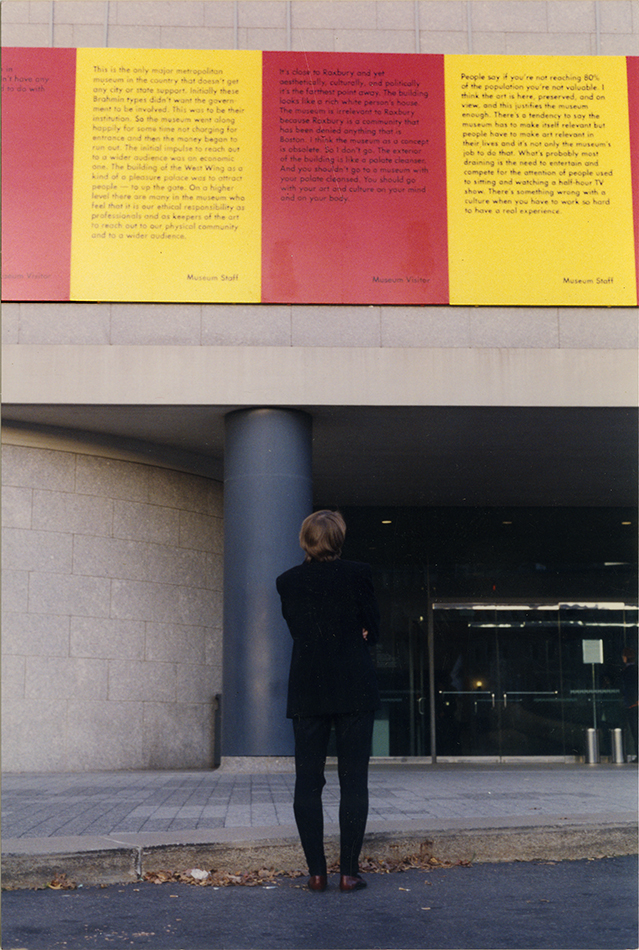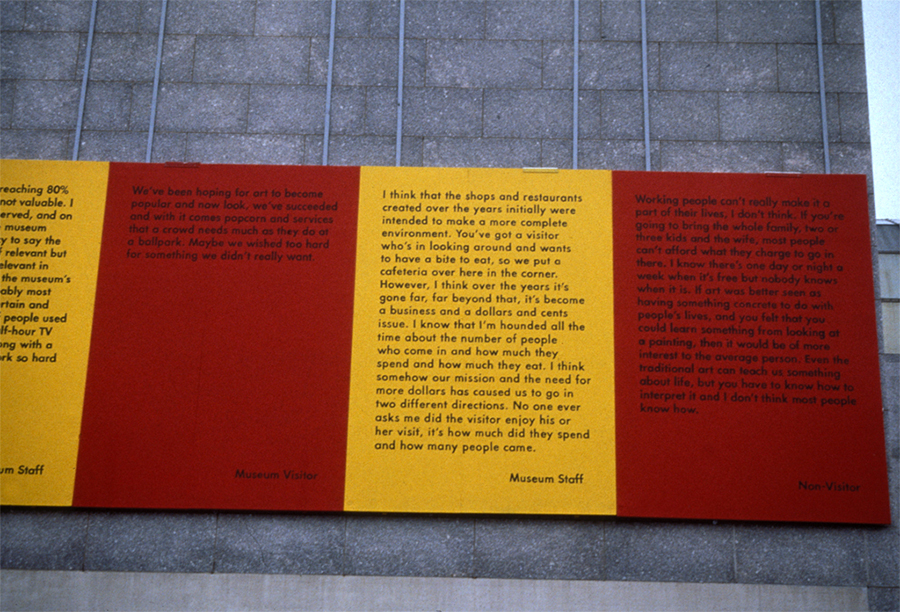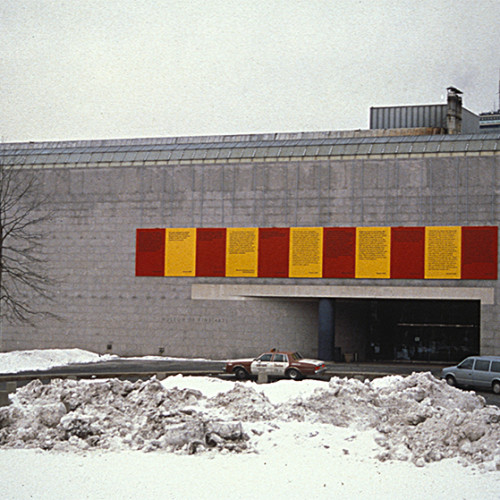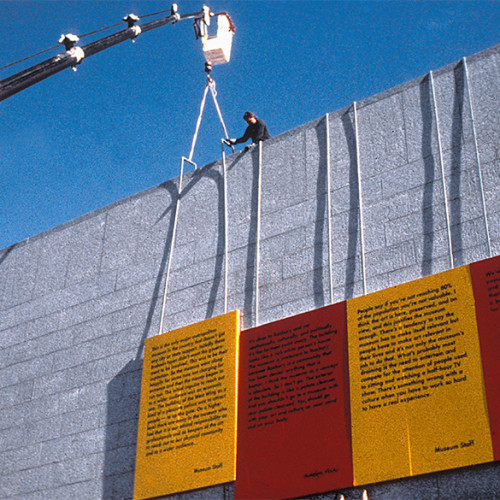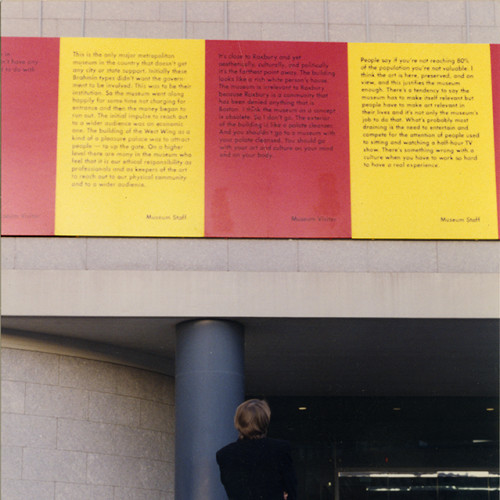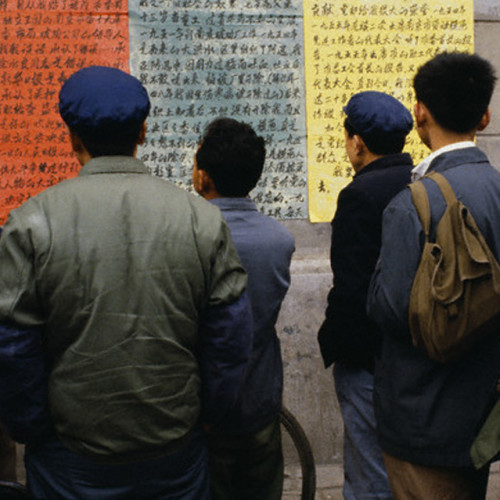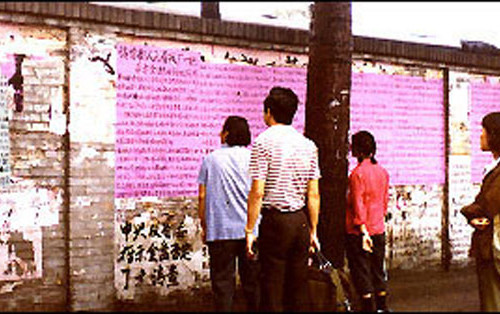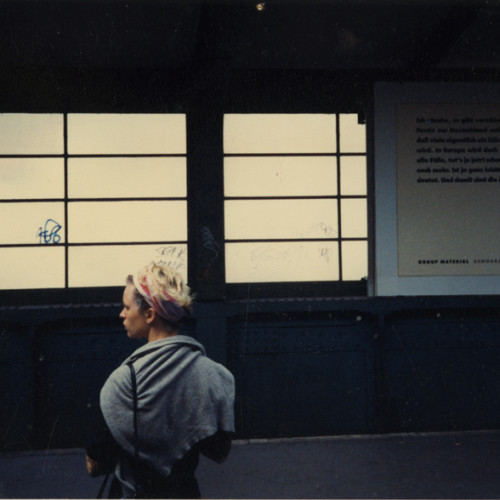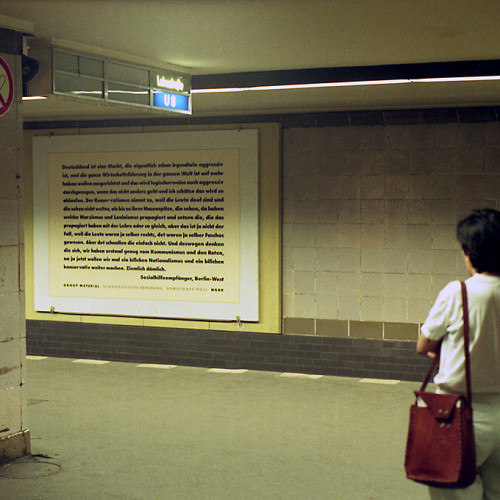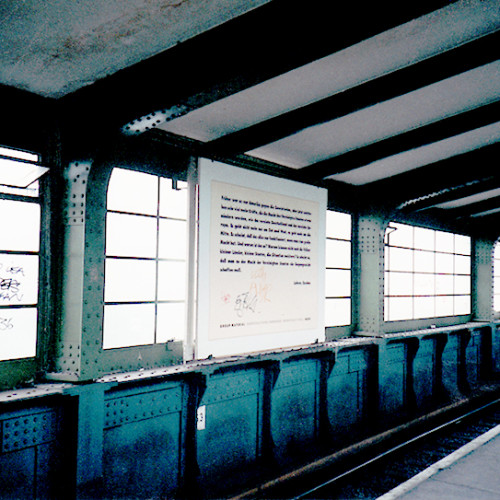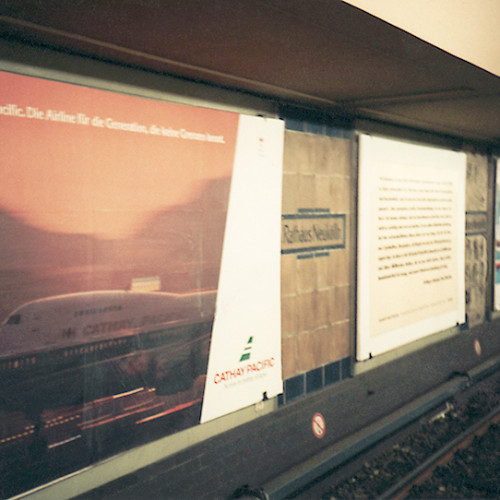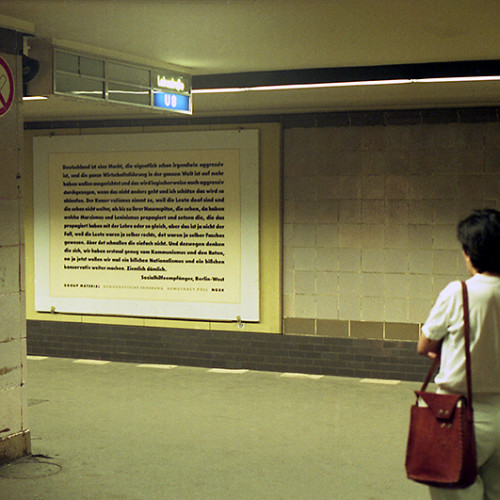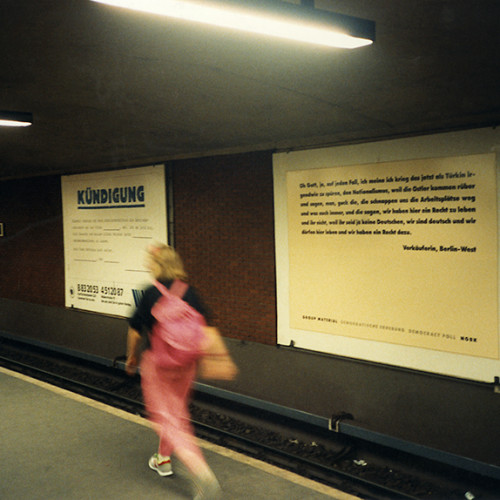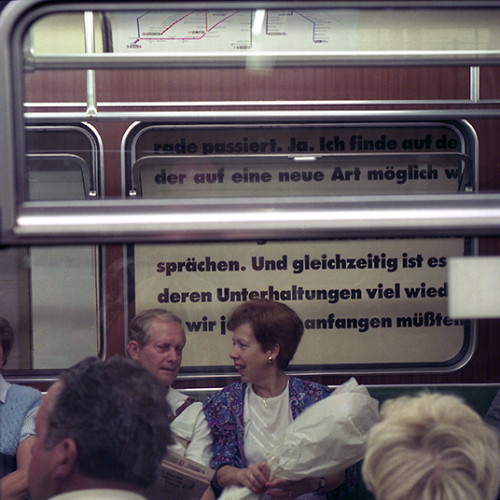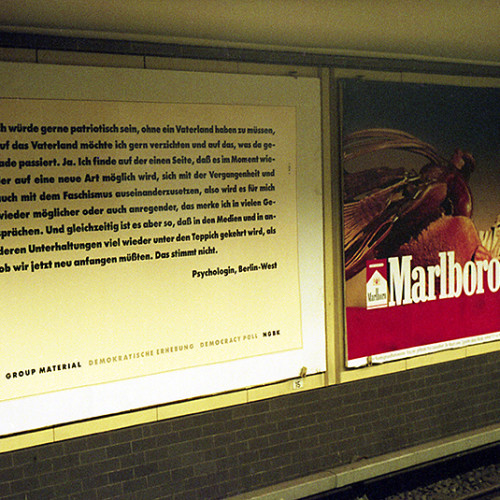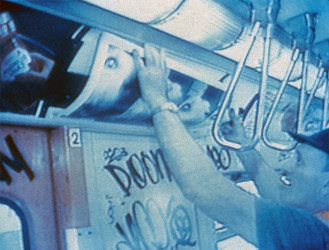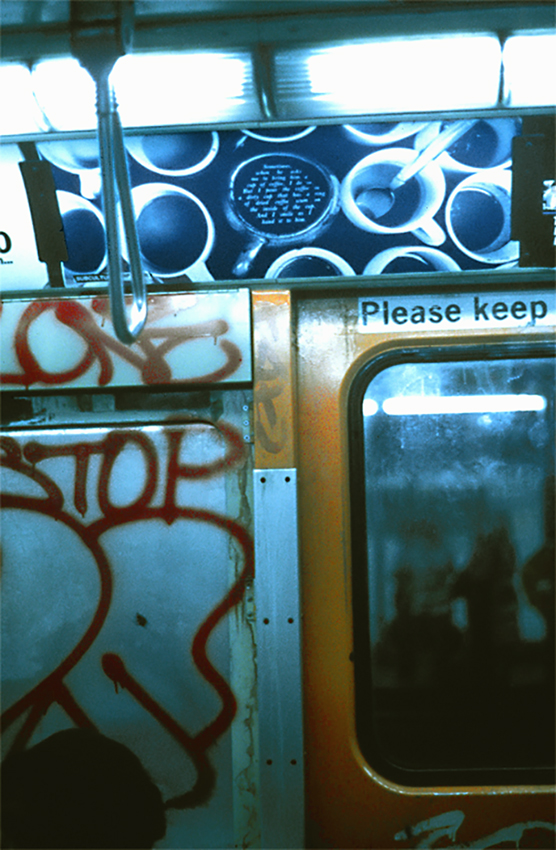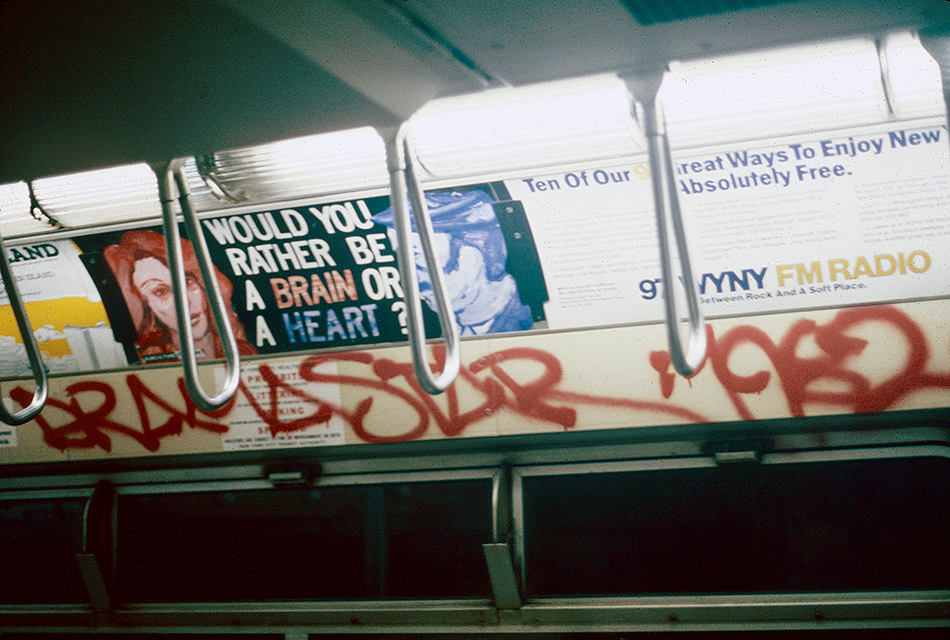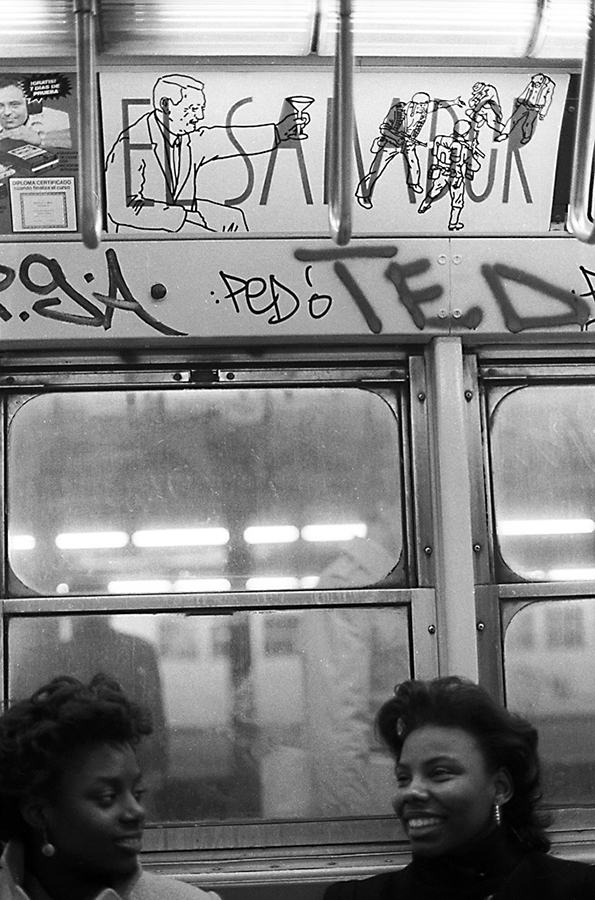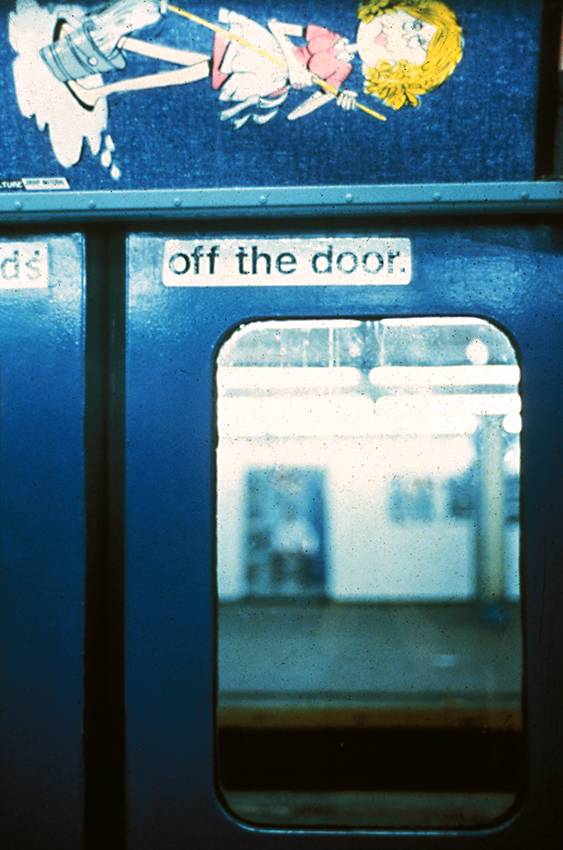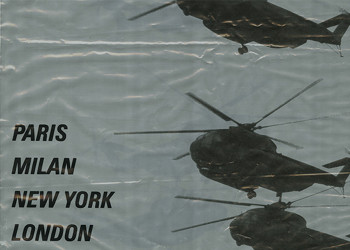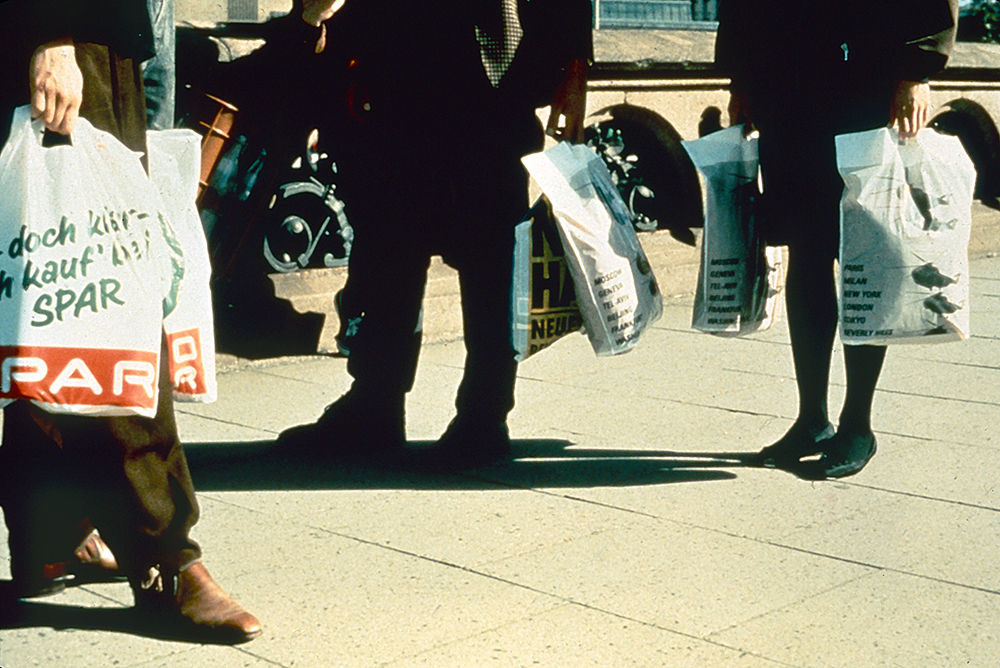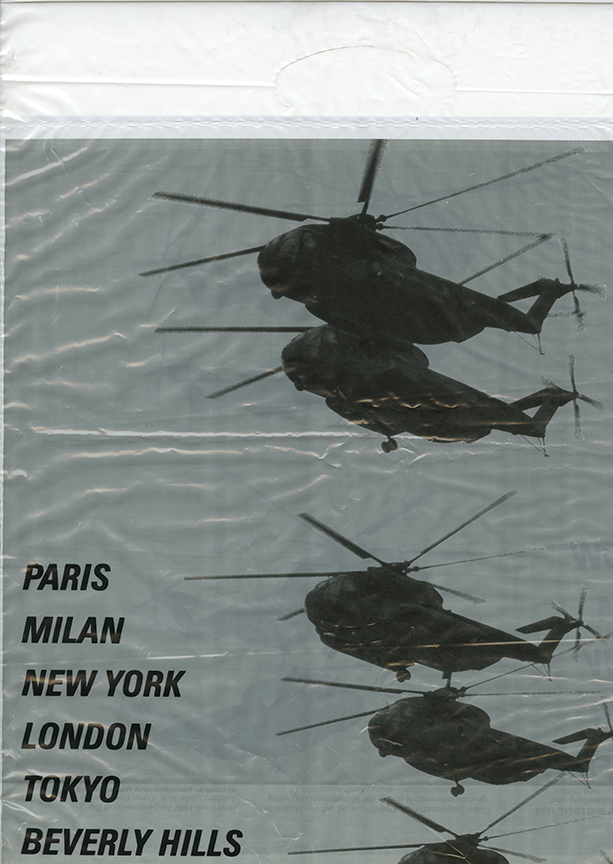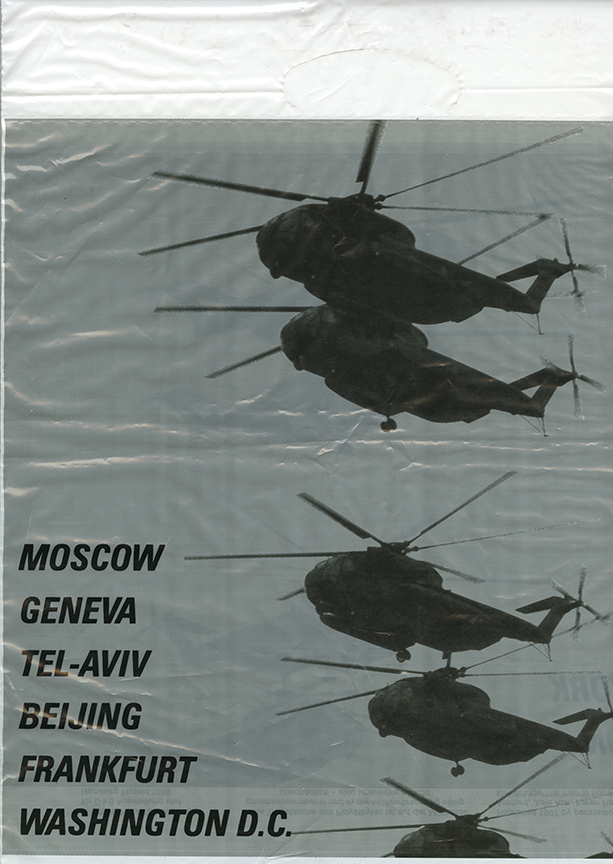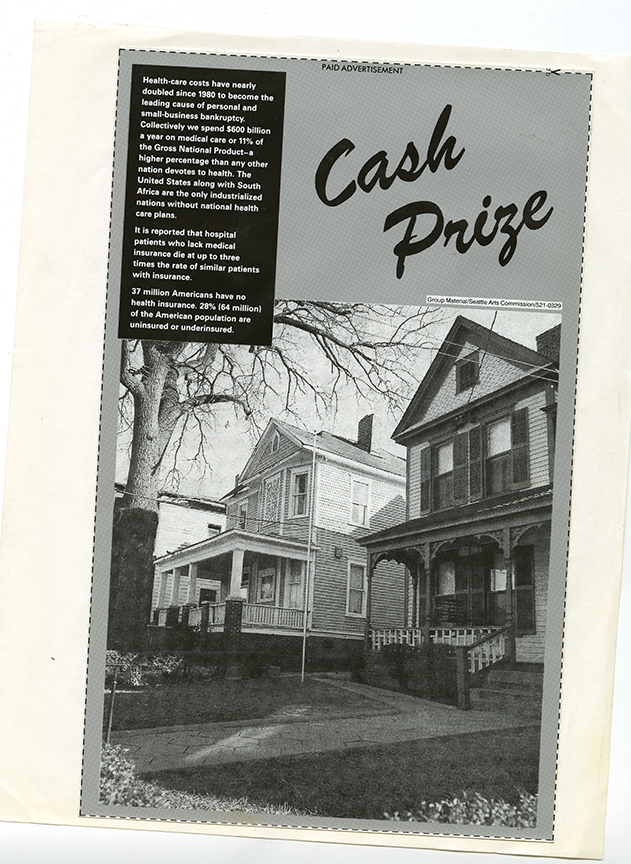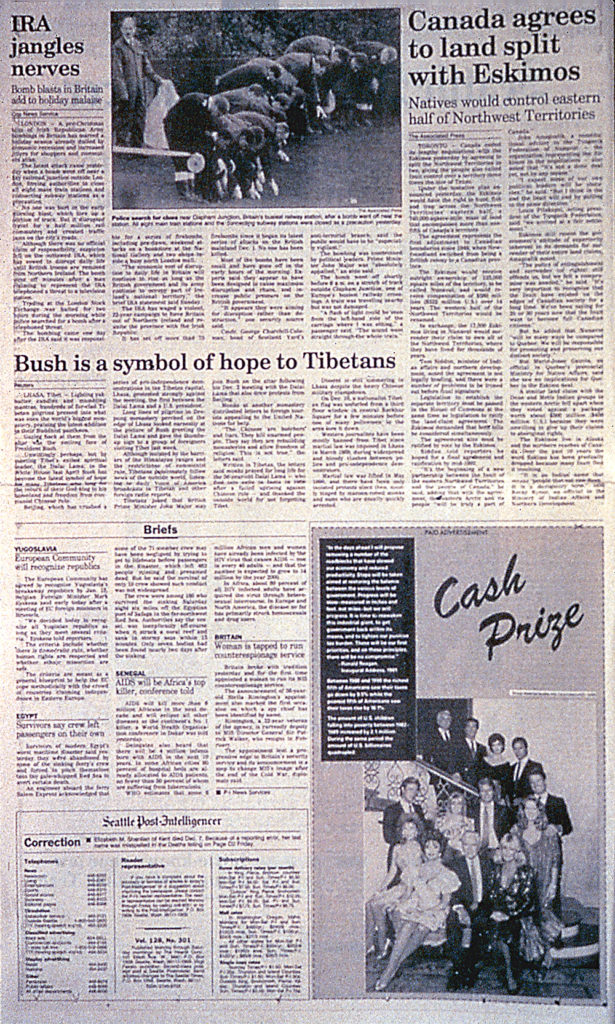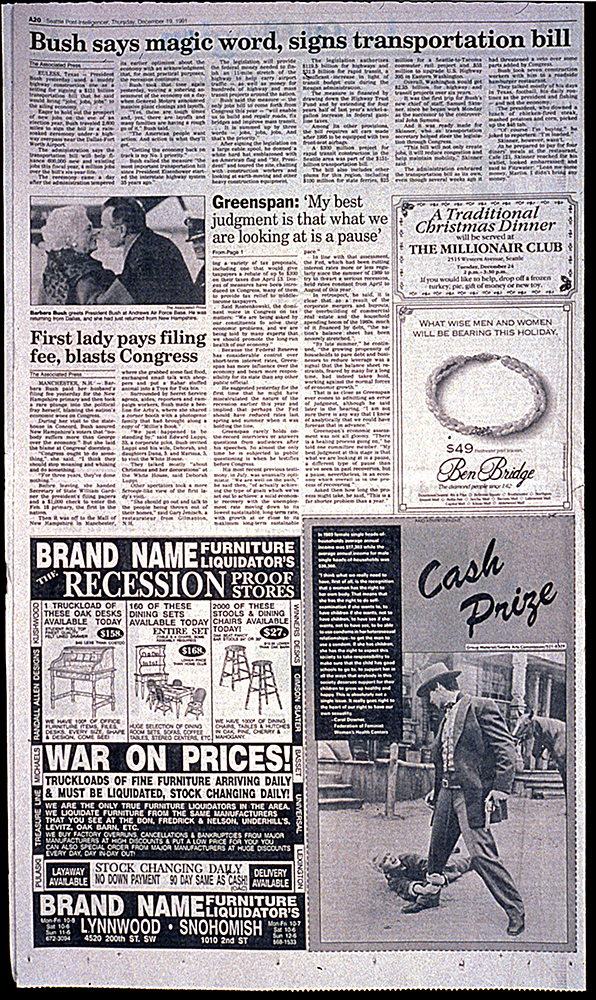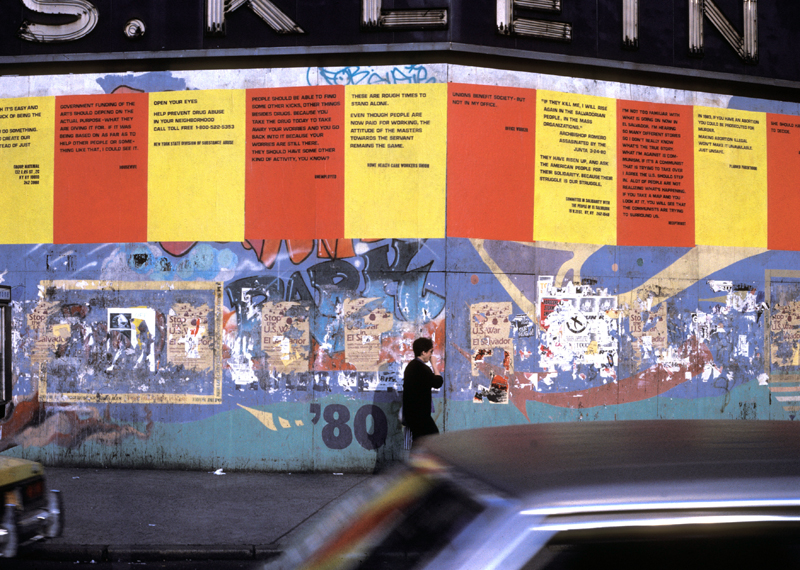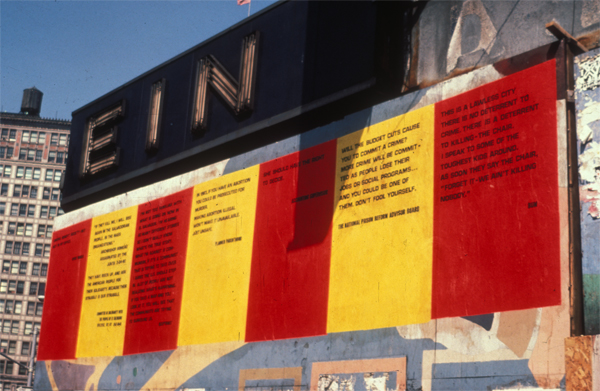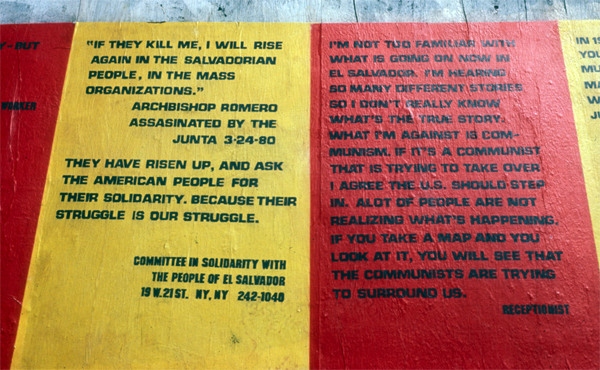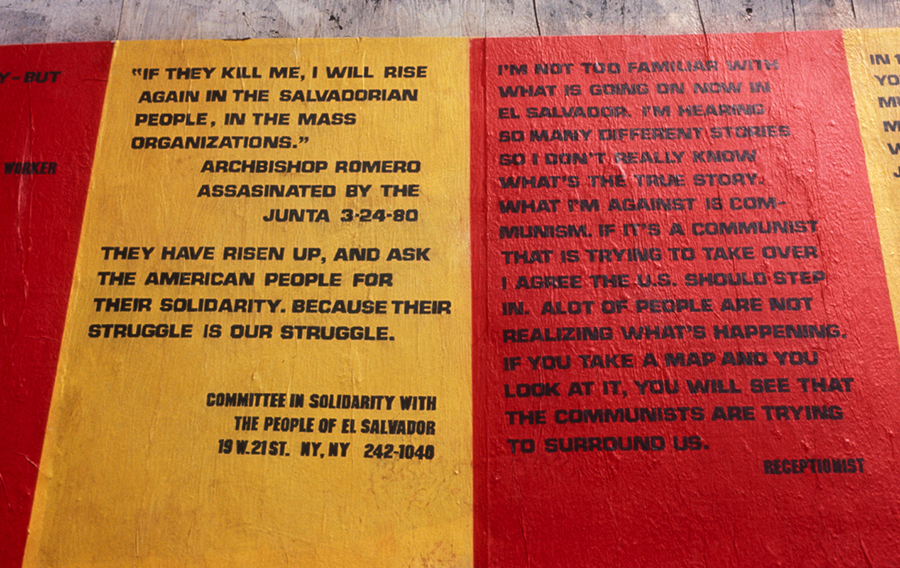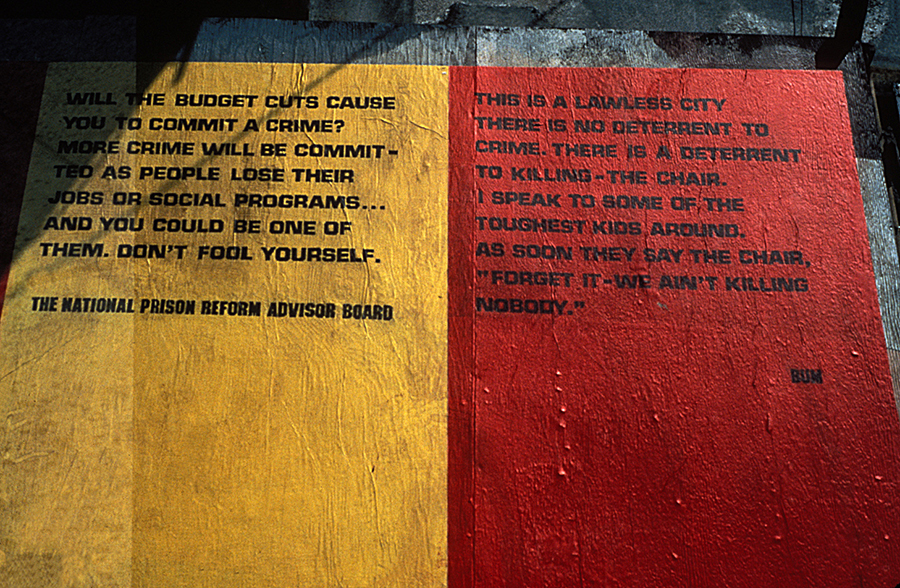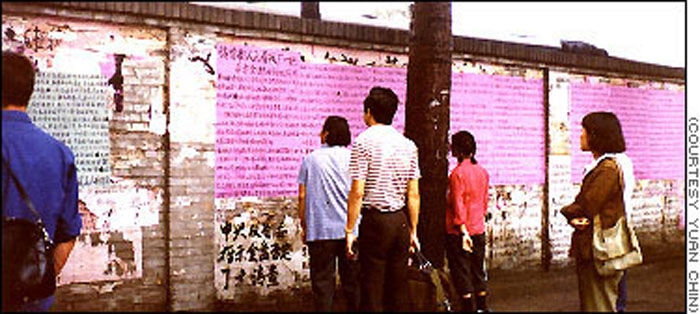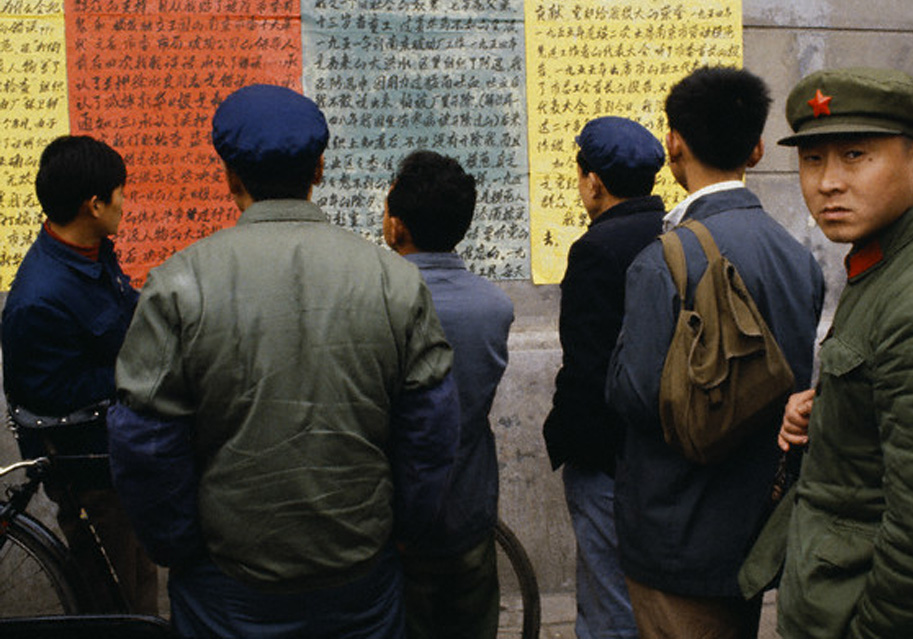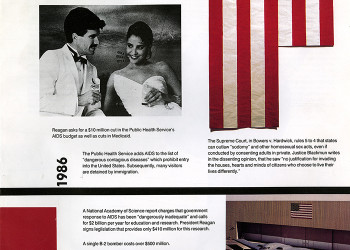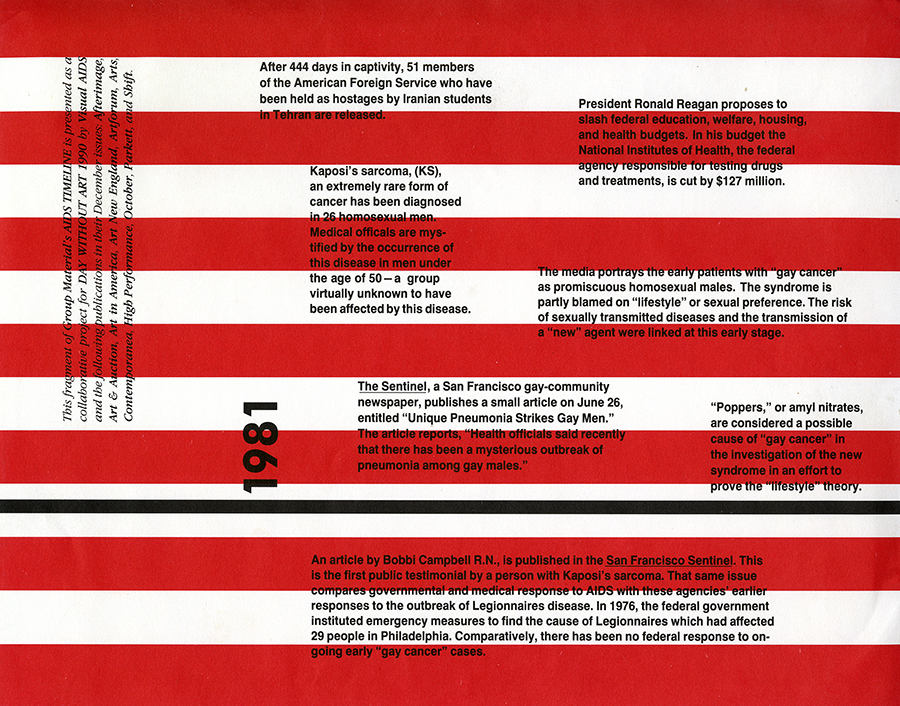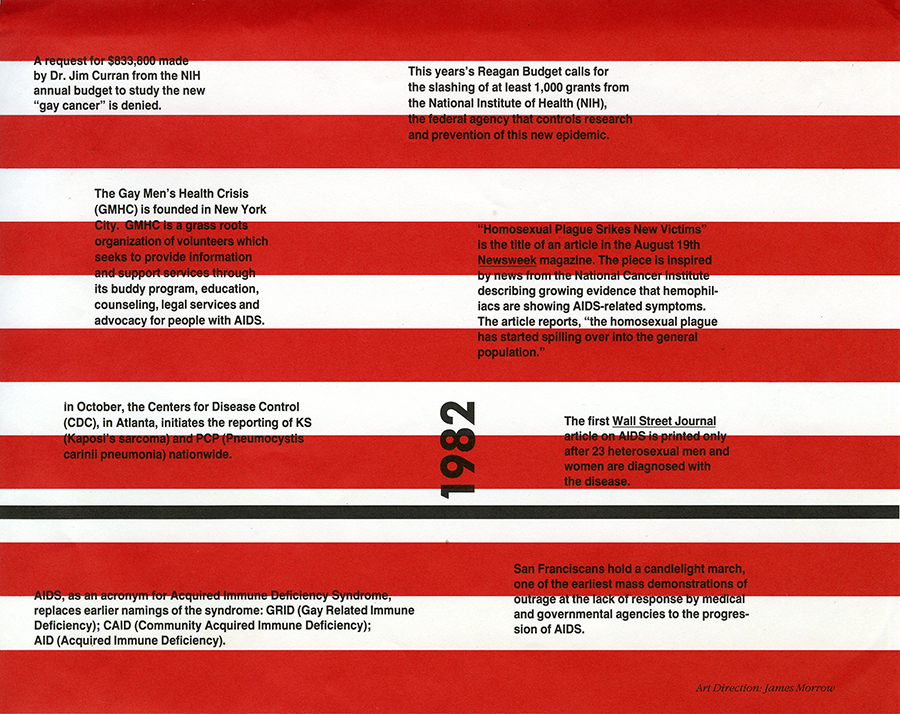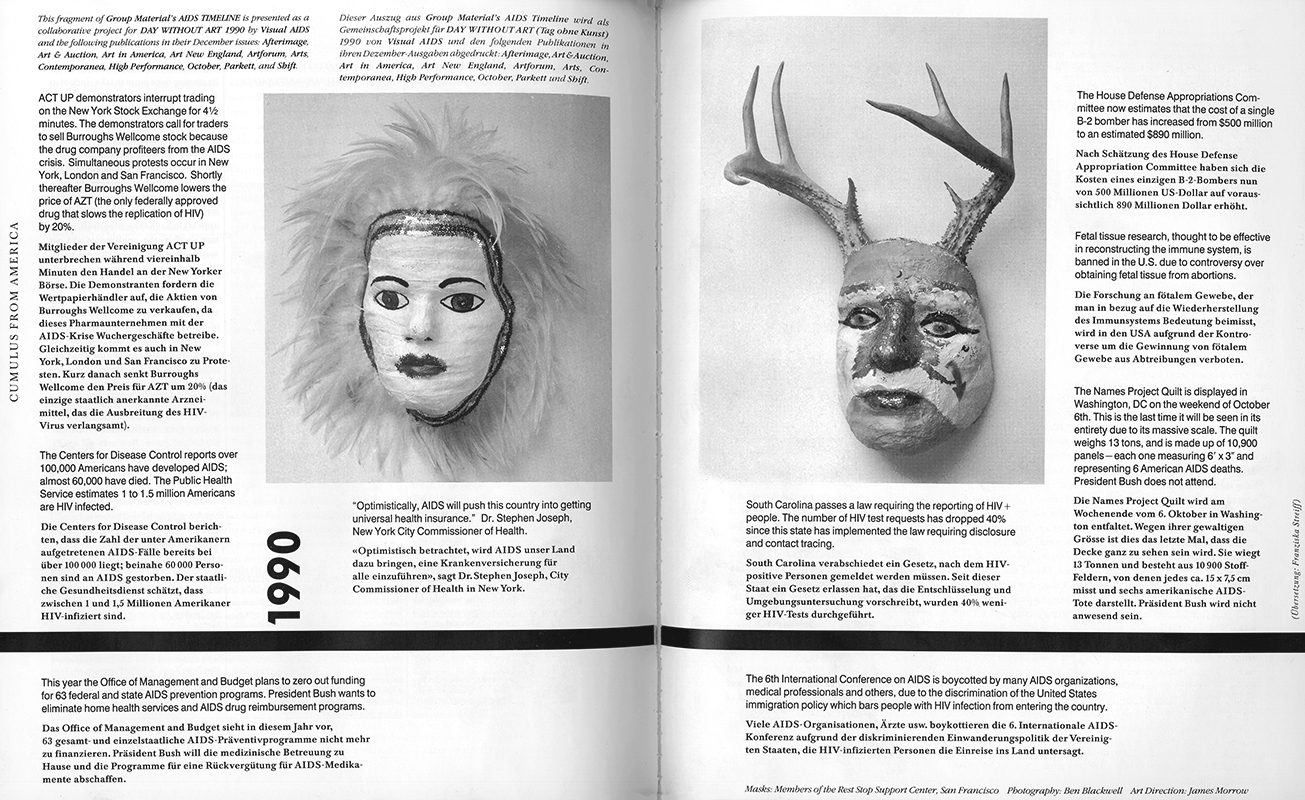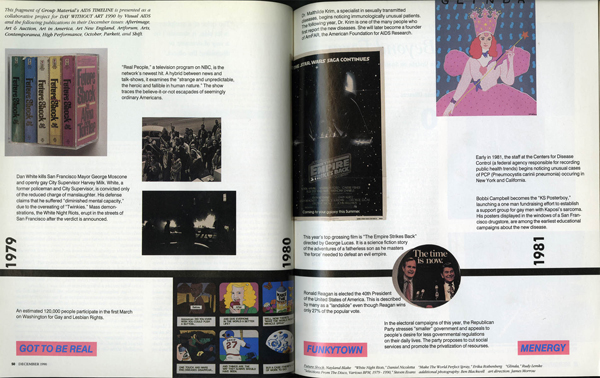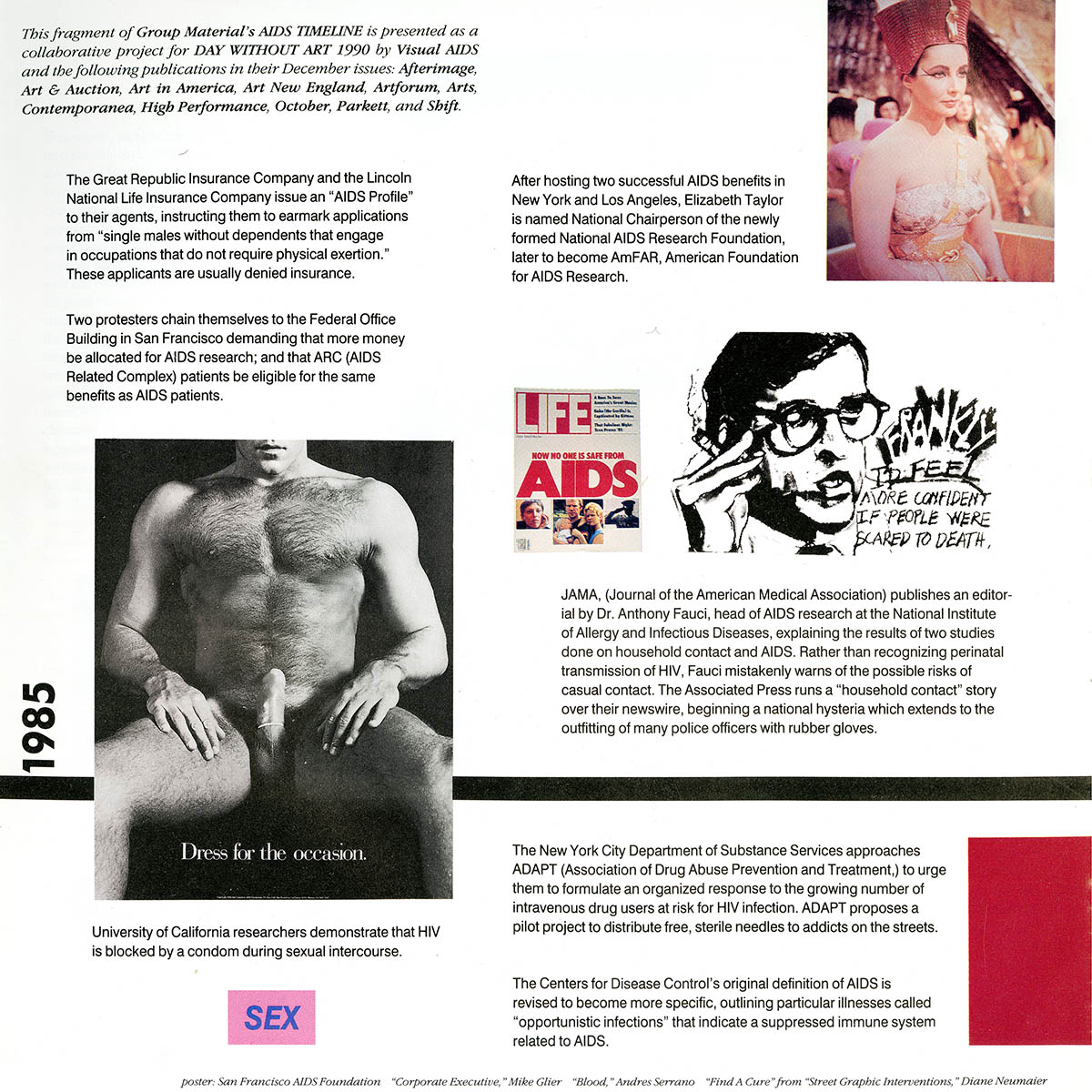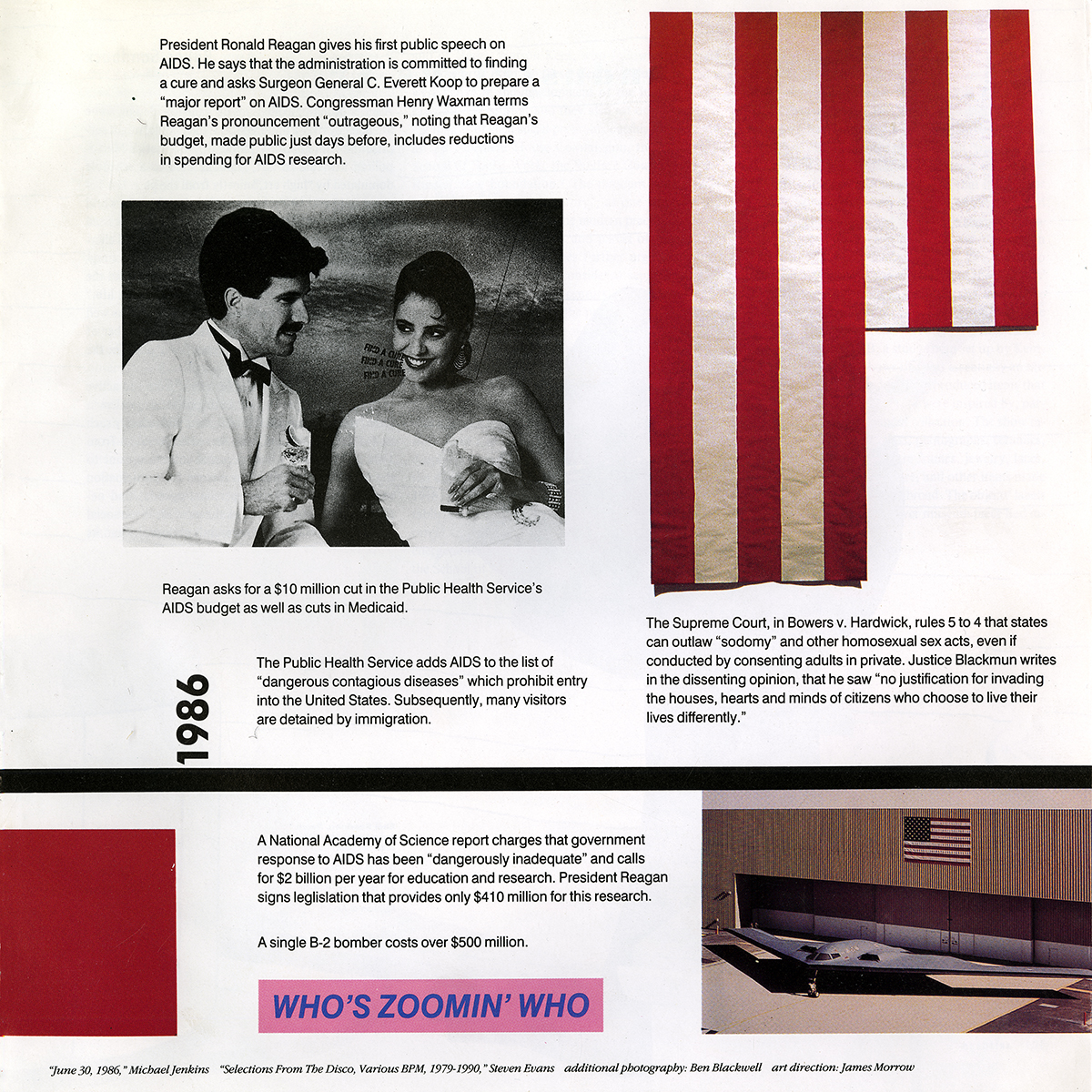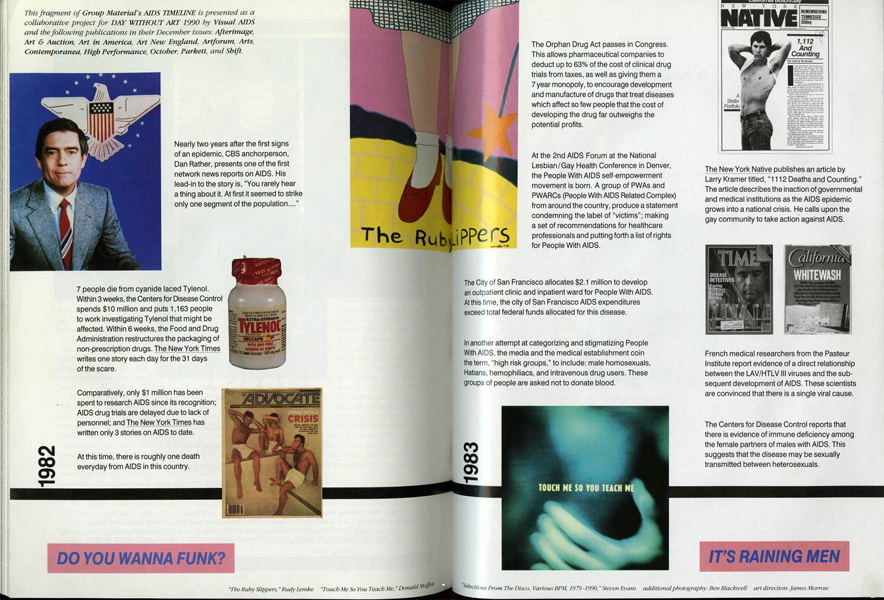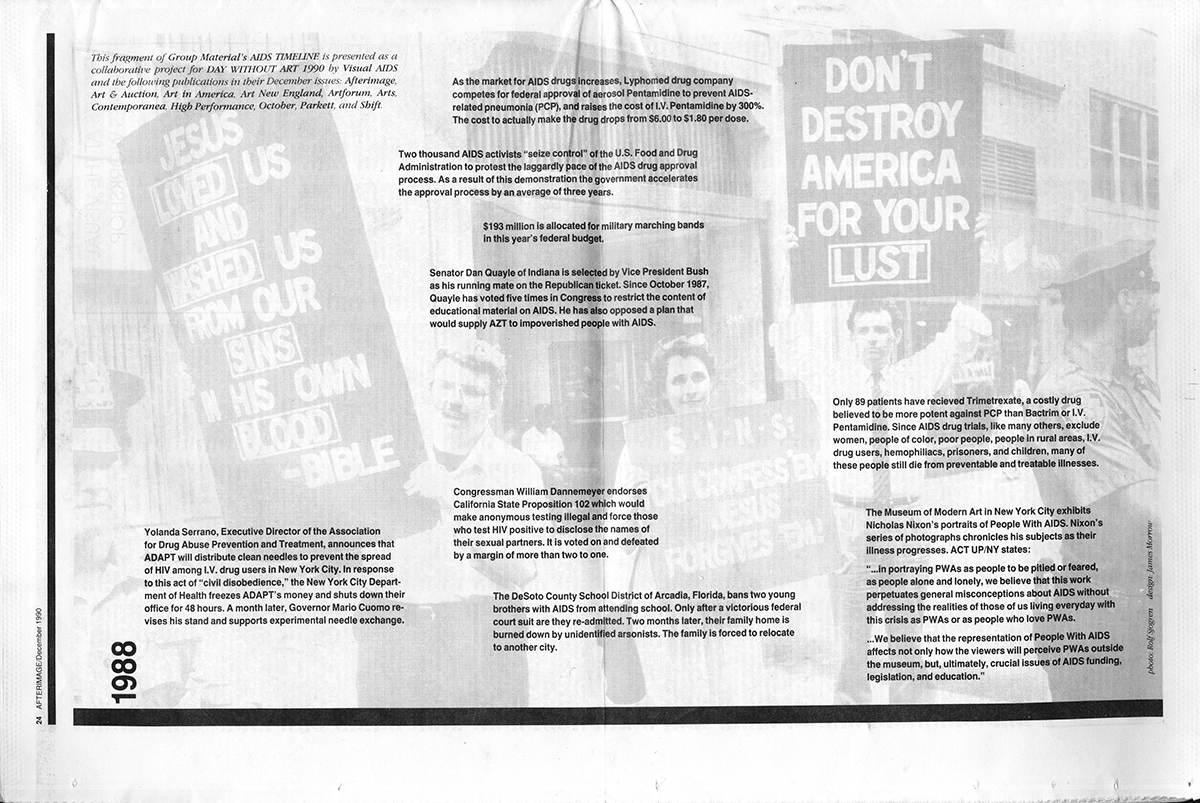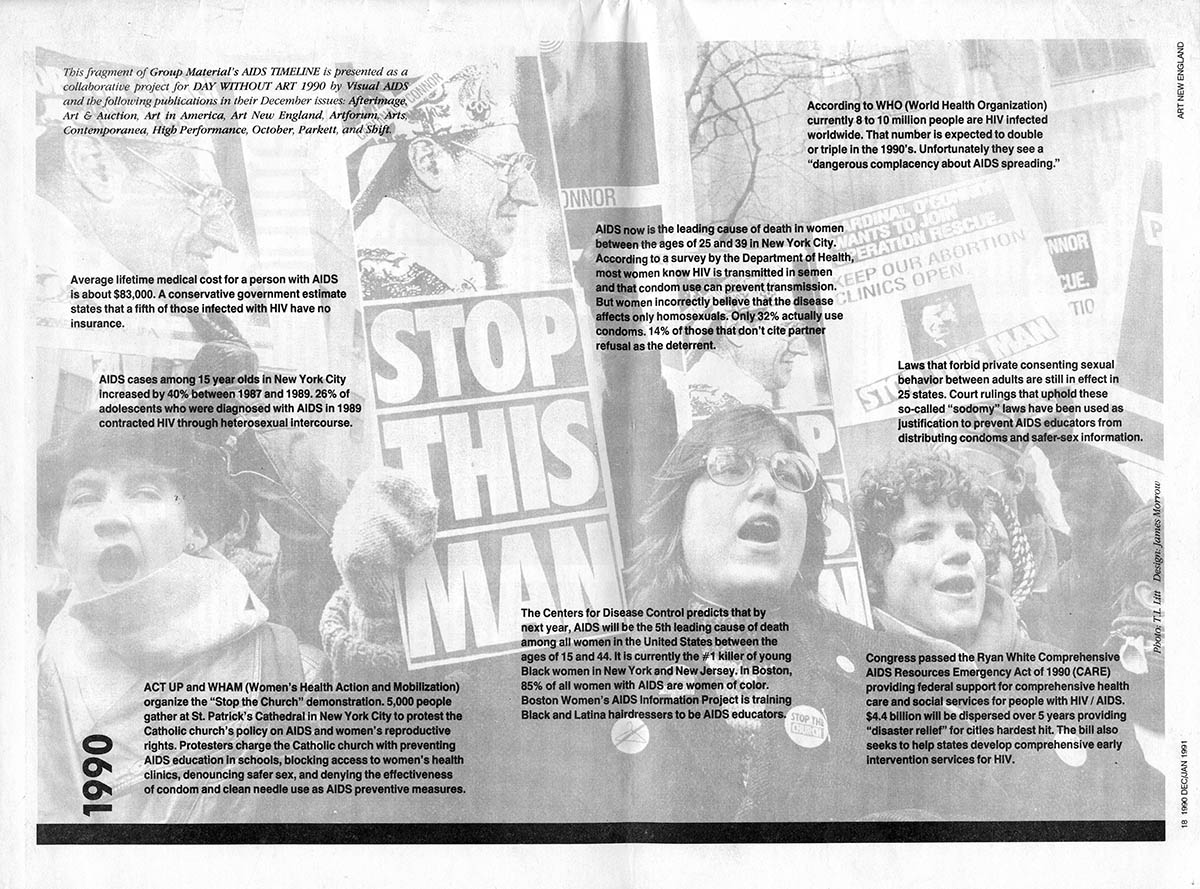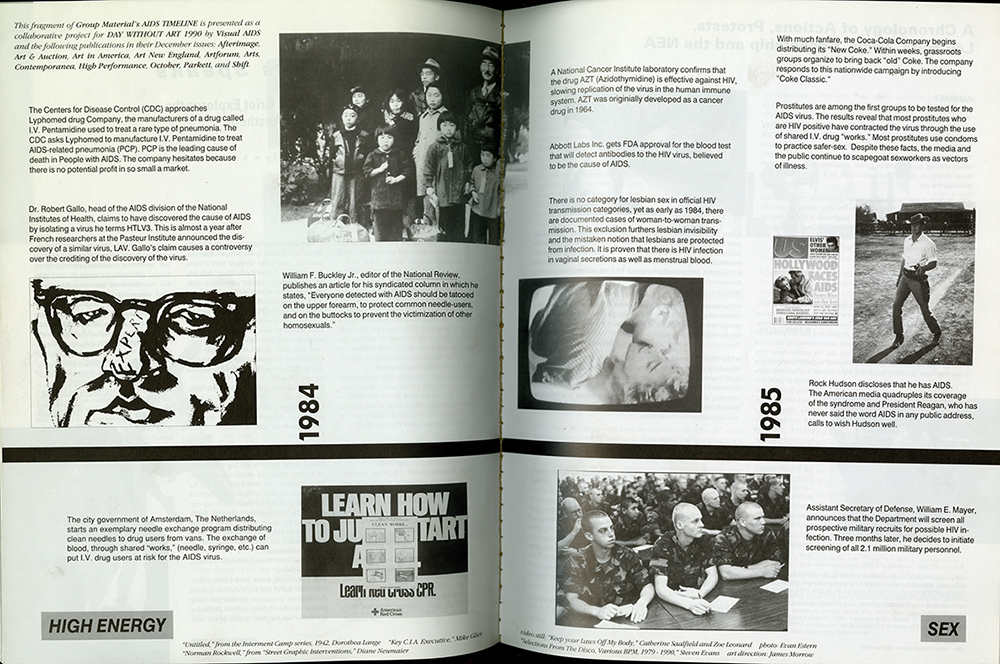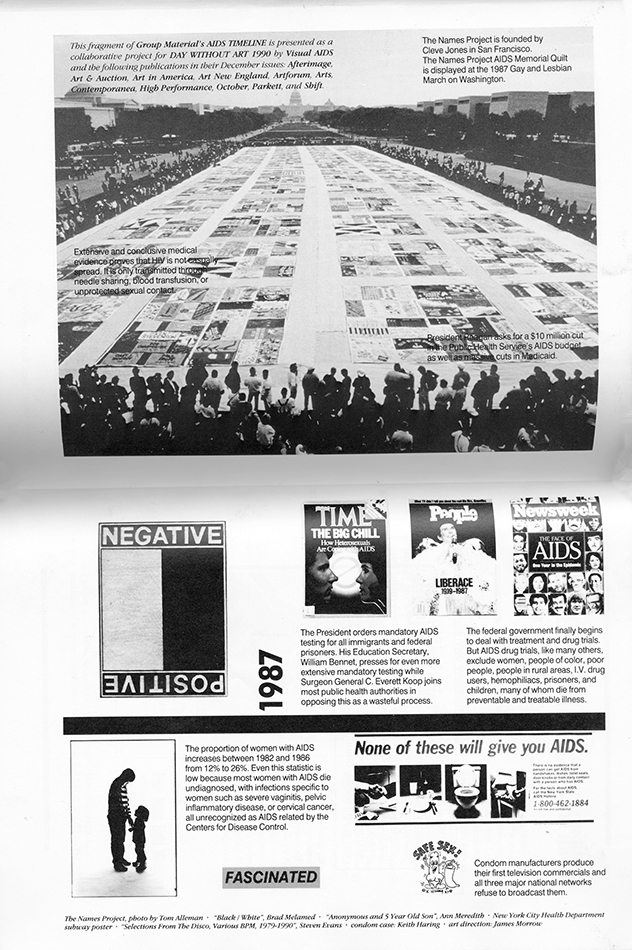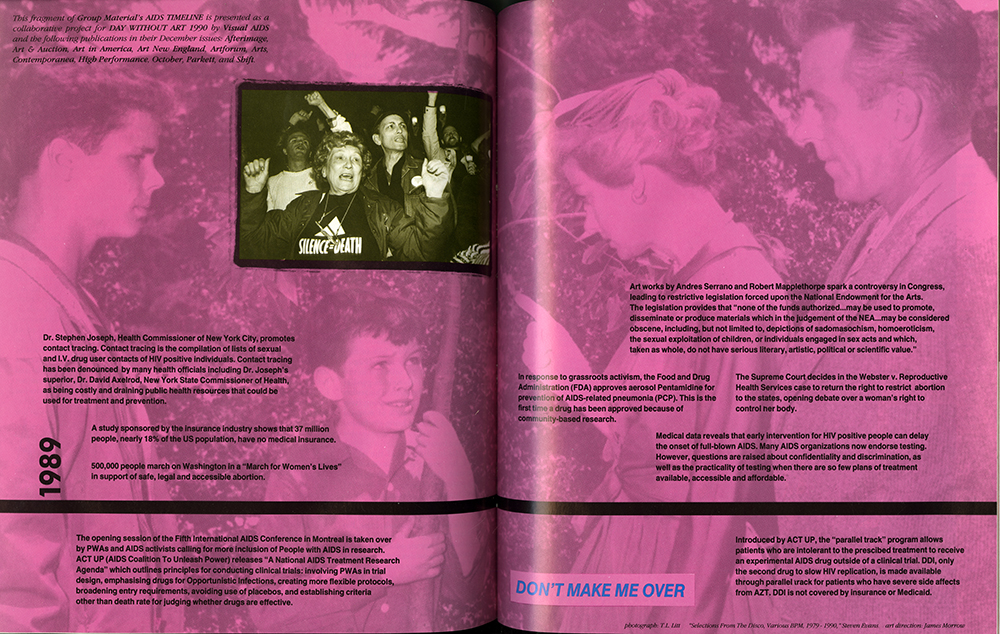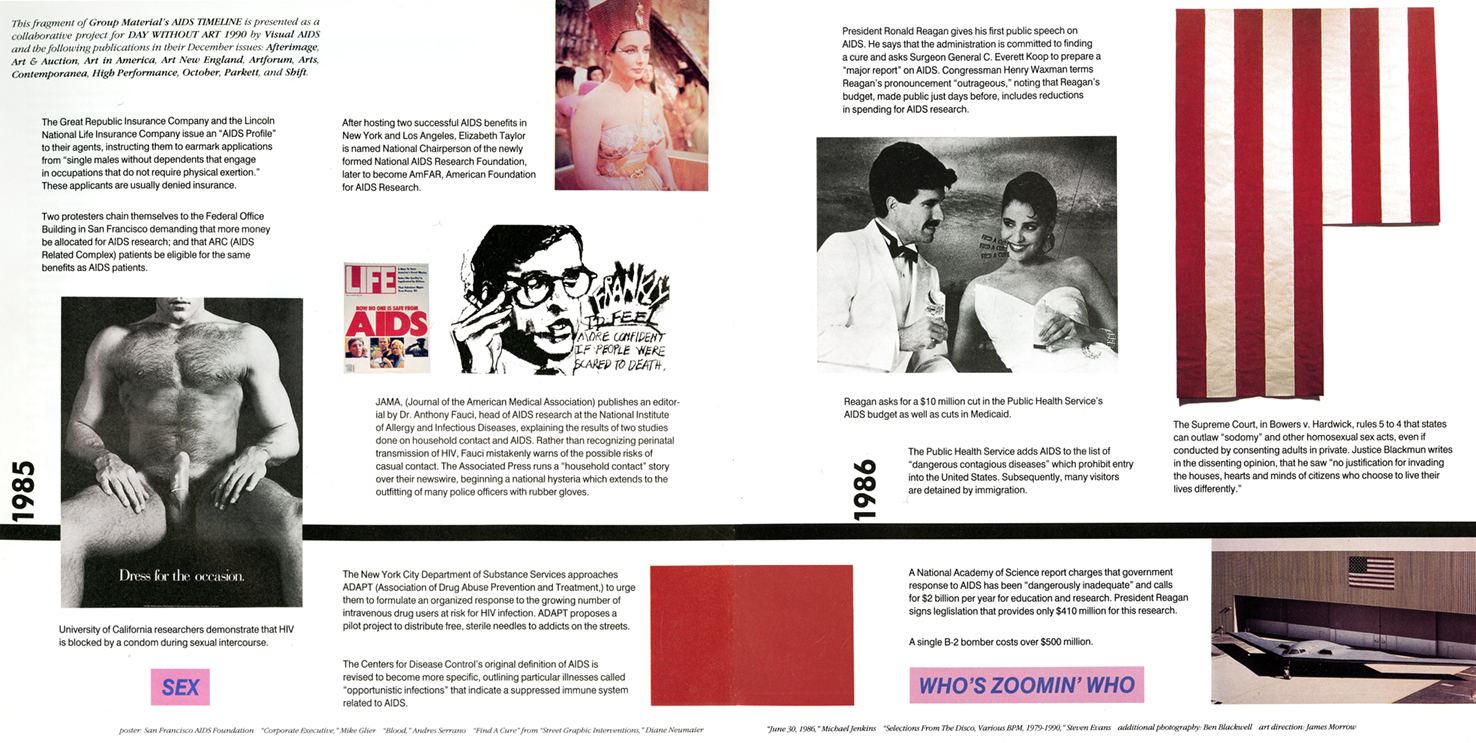
Program, produced for The Three Rivers Arts Festival, 7 – 23 June, 1996.
“The quotations and underlying images running throughout the program guide were compiled by Group Material as our contribution to this year’s public art component of the Three Rivers Arts Festival, Points of Entry: A Community Based Public Art Project. We have integrated the Festival’s schedules and information with a constructed ‘dialogue’ from interviews conducted spontaneously on the street, during a radio call-in program, and from scheduled discussions in homes and offices. Several excerpts are reproduced from previous writings by architects, critics and designers. All texts are represented anonymously to de-emphasize attributes normally used to categorize identity— such as location of residency or institutional affiliation—and instead highlight actual statements.
The questions we raised with interviewees were largely about their experiences using the city, neighborhoods and public spaces, recent relevant changes, personal and collective histories, functions of urban festivals and the cultural, corporate, and consumer entities that administrate, support and visit such events. The linked fragments can be read as a textual chain that was not conducted as a dialogue in real time, but should convey a logic of interconnectedness between topics.
As ‘community’ and ‘public’ are amorphous terms it is crucial to question the ideological underpinnings and context as well as the character of social constellations at work when they are invoked. Given recent trends toward professionalization of community-based art alongside privatization of public space, we decided to investigate the term ‘community’ in relation to the festival itself.
Our project is not a sociological or scientific survey, nor is it a random sampling of Pittsburgh residents and there is no pretense of objectivity here. The overarching goal of the project is to introduce unarticulated perspectives and voices into the official festival arena and to construct a picture of ‘community’ and ‘the city’ as indeterminate and contested by introducing unexpected observations, critiques, and agendas.”
From Group Material, “Project Statement,” Three Rivers Arts Festival Program, 1996
Collection of quotations from residents of Pittsburgh for Program. _(link)
PDF of entire work _(link)
“Point of Entry” – publication produced by Three Rivers _(link)

